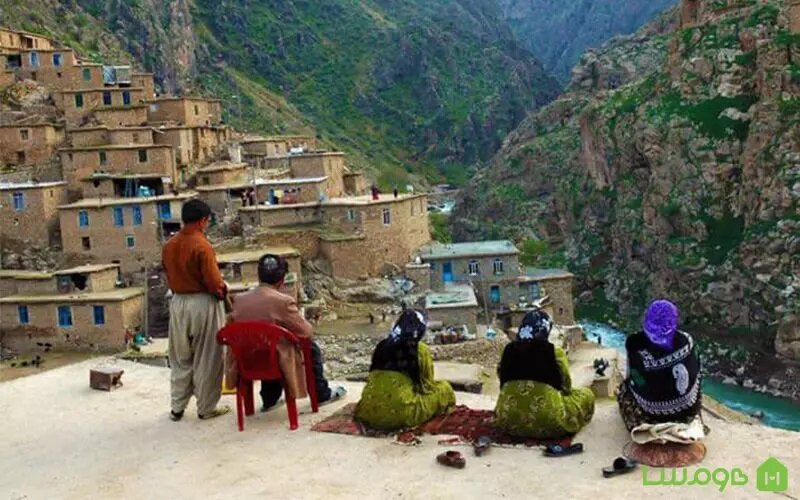TEHRAN - The picturesque village of Hajij, nestled in the UNESCO-registered Cultural Landscape of Uramanat in western Iran, is on the path to becoming a UNESCO World Heritage site.
Local authorities, in close collaboration with the tourism ministry, are currently working to develop a comprehensive dossier on the village, its cultural heritage, history, and tourist appeals to be submitted to the UN cultural body, ISNA reported on Tuesday.
“Its possible UNESCO registration would mark a significant milestone for the village and its surroundings,” said Dariush Farmani, Kermanshah province’s tourism chief.
Farmani underlined the ongoing efforts during a recent meeting dedicated to the project. “Registering Hajij as a global village presents a unique opportunity for regional development,” Farmani stated.
The village of Hajij, located in Paveh county, is renowned for its historic terraced architecture, where stone and mudbrick houses are intricately stacked along steep, semicircular streets overlooking a deep valley and a flowing river.
Such an architectural style is reminiscent of the famous village of Masuleh in northern Iran. The village’s layout not only enhances its visual appeal but also fosters a close-knit community, with the roofs of lower houses serving as pathways and courtyards for those above.
The UNESCO-listed Uramanat serves as an exceptional testimony to the cultural traditions of the Hawrami people, a Kurdish tribe residing in the Zagros Mountains for thousands of years.Elsewhere in his remarks, Farmani noted that while the application process is well underway, certain challenges remain. “We have one year to address any [existing] issues and finalize the application for submission to UNESCO,” he said, adding that these hurdles span across various governmental agencies and require coordinated efforts.
Hajij’s unique cultural and natural attributes make it a strong contender for World Heritage status. The village’s deep connection to its surrounding landscape is reflected in its name, which in Kurdish means “a deep and green valley.” Situated in a cold mountainous region, the village’s south-facing houses with thick walls and small windows are designed to maximize sunlight and withstand harsh winters.
In addition to its architectural and natural beauty, Hajij is a hub of cultural heritage, offering rich traditions in handicrafts and local cuisine. The village, however, is already a popular destination within Kordestan province, and gaining UNESCO recognition would further boost its tourism appeal, providing new economic opportunities for local residents.
Archaeological findings in the Hawraman/Uramanat region, including artifacts dating back approximately 40,000 years, caves, rock shelters, ancient paths, and inscriptions, provide evidence of continuous human habitation from the Paleolithic era to the present. Other historical elements, such as cemeteries, mounds, castles, and settlements, also highlight the persistence of the semi-nomadic lifestyle and agropastoral practices that have defined the region's inhabitants for centuries.
Uramanat serves as an exceptional testimony to the cultural traditions of the Hawrami people, a Kurdish tribe residing in the Zagros Mountains for thousands of years. This rich cultural heritage is exemplified by ancestral practices such as transhumance, the seasonal migration between fixed summer and winter pastures known as Havars, and steep-slope terraced agriculture. The region also showcases sophisticated soil and water management techniques and traditional knowledge essential for planning and constructing steeply terraced villages.


No comments:
Post a Comment